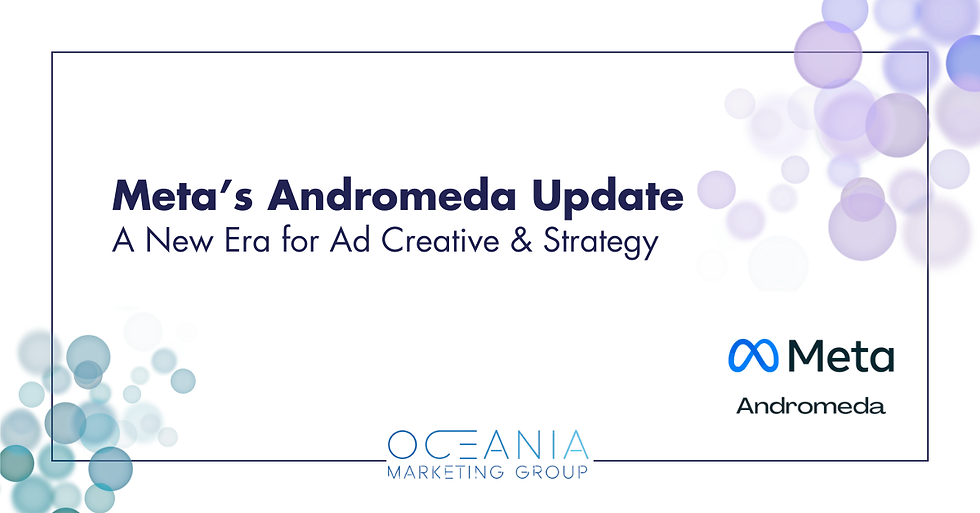B2B Marketing Strategy: Harnessing Google Ads and LinkedIn for Simple Intent Signal Success
- Karen Lewis
- Nov 7, 2023
- 3 min read

In the ever-evolving landscape of B2B marketing, businesses are constantly searching for innovative strategies to connect with potential customers. One such approach gaining significant traction is the use of intent signals.
Intent signals are a key element in understanding a prospect's inclination to make a purchase or sign up for services offered by your business. By leveraging Google Ads and LinkedIn, businesses can create a robust simple intent signal strategy that not only identifies potential customers but also facilitates meaningful engagement.
Understanding the Concept of Intent Signals
Intent signals are digital breadcrumbs that potential buyers leave behind as they navigate the internet. These breadcrumbs can include web searches, content consumption, and interactions on social media platforms. They are essential for businesses because they help identify prospects who are actively seeking products or services that align with what a business offers. By targeting prospects displaying intent signals, companies can enhance their conversion rates and ROI.
The Benefits of a Simple Intent Signal Strategy
Implementing a simple intent signal strategy through Google Ads and LinkedIn can bring a plethora of advantages to your B2B marketing efforts:
1. Higher Conversion Rates
By targeting users who are actively searching for products or services, you increase the likelihood of conversions. Your messaging reaches those with a genuine interest, resulting in higher conversion rates meaning more effective advertising.
2. Cost Efficiency
This strategy ensures that your ad spend is directed towards the most promising leads, thus optimising your budget and reducing the cost per acquisition.
3. Improved Relevance
By understanding a prospect's intent, your marketing messages become more relevant, making your brand and offerings resonate better with your target audience.
4. Precise Audience Targeting
Identifying intent signals allows for precise audience targeting, ensuring your marketing efforts are not wasted on irrelevant audiences.
5. Enhanced Personalisation
Using intent signals, you can tailor your messaging to the specific needs and interests of prospects, creating a more personalised and engaging experience.
Steps to Implement a Simple Intent Signal Strategy
The steps to create and implement a simple intent signal strategy for B2B marketing:
1. Identify Your Ideal Customer Profile (ICP)
Begin by defining your ICP, a detailed description of your most valuable customer. This will help you focus on prospects with the highest potential for conversion.
2. Keyword Research
Conduct comprehensive keyword research to identify search terms that align with your products or services. These keywords will serve as the foundation for your strategy.
3. Set Up Google Ads Campaigns
Create targeted Google Ads campaigns based on your identified keywords and ICP. Use negative keywords to filter out irrelevant traffic.
4. Utilise LinkedIn for Precise Targeting
LinkedIn offers a wealth of professional data that can be harnessed for effective B2B marketing. Utilise their advertising platform to target specific job titles, industries, and company sizes that match your ICP.
5. Employ Identifiers
Use identifiers such as UTM parameters, Google Analytics tracking, and conversion tracking to measure the performance of your campaigns and identify which intent signals are generating the most valuable leads.
6. Monitor and Adjust
Regularly monitor the performance of your campaigns and adjust your strategy as needed. Be ready to adapt to changing intent signals and emerging opportunities.
7. Create Engaging Content
Develop content that speaks directly to the needs and interests of your target audience. This could be in the form of blog posts, whitepapers, webinars, or even LinkedIn posts.
8. Analyse Data and Iterate
Continuously analyse the data generated by your campaigns. Identify what's working and what's not, and make data-driven adjustments to improve your results.
A simple intent signal strategy for B2B marketing, utilising Google Ads and LinkedIn, can provide substantial benefits for businesses. By understanding and leveraging intent signals, you can target the right audience, improve conversion rates, and optimise your marketing budget.
As you implement this strategy, remember to use identifiers to track performance and adapt your approach to evolving intent signals. With the right strategy in place, you can achieve remarkable success in the world of B2B marketing. #B2BMarketing




Comments